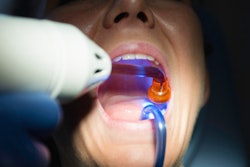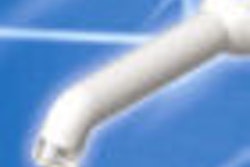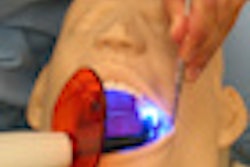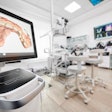
Thinking about upgrading your curing lights? You might soon find yourself nudged in that direction as new environmental legislation in some countries limits the sale of quartz tungsten halogen light bulbs.
But the type of light you use is less important than knowing how to use it, according to Fred Rueggeberg, D.D.S., M.S., director of the dental materials section at the Medical College of Georgia School of Dentistry and a polymerization researcher.
The European Union began phasing out halogen bulbs last week. Several other governments around the globe have already restricted them. And the U.S. plans to follow suit in 2012.
Light-emitting diode (LED) lights have their advantages, as do plasma arc lights, but for curing there's nothing wrong with halogen either, Dr. Rueggeberg said. In addition, dentists who like their old halogen lights can still stock up on enough bulbs and filters to last until they sell their practices, he noted.
"You need to learn to use what you've got," Dr. Rueggeberg said. "It doesn't matter how fancy it is. A person who doesn't know how to play the piano is going to sound just as bad if you give him a Steinway as if he played on some junky piano."
The recommended exposure times included with composite resins can't be trusted, he added. "They're not even in the ballpark," he said. He laid out a system by which dentists can figure out distances and exposure times that fit their specific circumstances.
Matching light and material
Lights vary widely in the wavelength and energy they emit. And composites vary in the way they react to different wavelengths, depending on the photoinitiators (compounds that respond to light by catalyzing the polymerization within the composite).
"You have to marry the two," Dr. Rueggeberg said. "With quartz tungsten halogen and plasma arc, it doesn't matter what you have in front of you. Whatever you buy, they're going to polymerize it very well."
One type of LED light has a blue chip surrounded by four violet chips; this gives it two wavelengths, so it, too, can polymerize most composites. Other LED chip configurations currently available use up to three different LED colors to further enlarge the spectrum of wavelengths emitted. But argon-ion lasers and LEDs emitting only blue light will only polymerize some composites because they don't provide the right wavelength for other types of photoinitiators.
"Some people say, 'Don't buy an LED light. It won't cure everything,' " Dr. Rueggeberg said. "My response to that is, 'Look at the LED light. They're not all the same.' "
Even if you know which photoinitiator works with which wavelength and which wavelength your light emits, it is not always clear which photoinitiators are in which composites.
The easiest solution is to use lights and composites from the same manufacturer. If you want to try out a new composite, you should ask the sales reps for each supplier to let you try curing the composites they're selling.
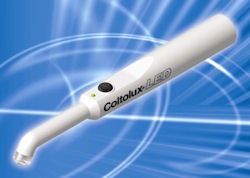 |
| The Coltolux LED curing light can cure 2 mm of composite in 10 seconds, according to Coltène/Whaledent. Image courtesy of Coltène/Whaledent. |
Still, while that might answer your most basic questions, it could still leave you wondering how long to expose the material.
Light can't penetrate more than a couple of millimeters into the composite. So if you don't cure the material long enough, a soft layer will remain at the bottom, leaving the restoration weak.
If you cure too long, you can damage the pulp. Filters will stop infrared light -- the wavelength that heats the fastest -- but even visible light can generate heat, Dr. Rueggeberg said. An experiment in which researchers applied soldering irons to monkeys' teeth suggests that raising the temperature of a tooth more that 5.5° C causes irreversible pulp damage in 15% of teeth (Oral Surgery, Oral Medicine, and Oral Pathology, April 1965, Vol. 19:4, pp. 515-530).
And in their own laboratory, Dr. Rueggeberg and colleagues found that normal curing can easily raise a tooth to that temperature or beyond. "It is still a leap of faith to apply results obtained using monkeys and soldering irons to humans and curing lights," he cautioned in an e-mail to DrBicupsid.com. "But for now, that is all we have."
Teeth can cool themselves down somewhat through circulation. Anesthesia, with or without vasoconstrictors, interferes with this process, Dr. Rueggeberg said. "A lot of people say, 'Should I use a nonvasoconstrictor?' It doesn't make any difference." And even good circulation isn't enough to completely protect the tooth.
Putting a wet cotton ball on the side of the tooth opposite from the light doesn't help much either. "The thing that really works is air movement across the tooth crown," he said. "I haven't tried it with suction, but I don't see why it wouldn't work."
Curing times
Even if you can prevent pulp damage, though, you don't want to spend more time than necessary curing. So how do you know how much is enough?
Dr. Rueggeberg outlined a simple procedure that dentists can do in their own offices. Take a compule, pull out the plug from one end, and snip off the other end. Pack it with the composite you want to test. Cure it with your light touching one end. Extrude the composite with a syringe and remove the uncured material. Then measure the length of the cured material with a micrometer.
Try longer and longer exposure times. The longer you expose the material, the more will be cured. But at some point, you'll reach a point of diminishing returns -- longer exposure will result in less and less additional curing. That will give you your optimal curing time. For example, using a halogen light on a common composite, Dr. Rueggeberg found that it cured 1.5 mm in 10 seconds, 2 mm in 20 seconds, and 2.5 mm in 30 seconds. But after 60 seconds, it still only cured 2.5 mm. So he knew that 30 seconds was the optimum exposure duration for that light with that composite.
You can also measure the effect of various tip distances. You lay down a piece of Scotch tape and use a perio probe to measure out the distance you want to check. Role the tip of the compule so that a length of tape extends from the end of the compule. Then compare the effects of different distances.
You can even bring this equipment with you to a trade show and compare various lights before buying them, Dr. Rueggeberg suggested. "No one can tell you how long to expose in your specific clinical situation," he said. "But you can customize your photocuring. You can make it specific for your office."
You'll be on your way to optimal polymerization while spending minimal chairside time, he concluded.
Copyright © 2009 DrBicuspid.com




